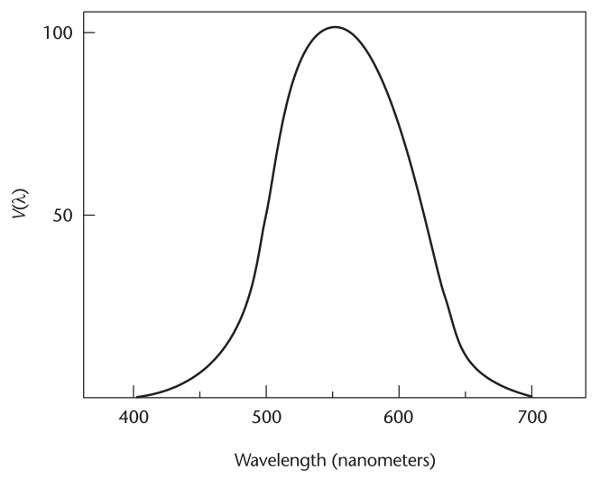Visual Computing in Life Science: Luminance, Brightness, and Lightness
This post will explain the differences between luminance, brightness, and lightness and also elaborate on how our eyes are not objective.
Luminance
def. The objective physical measure of the amount of visible light. Unit: candela/square meter.

V(𝜆) is a luminous efficacy. This is the curve of human visible light, this can be subjective, and Le(𝜆) is the physical intensity (Radiance) of the light, electromagnetic unit(𝑊/(𝑚^2𝑠𝑟)). This is based on the experiments of CIE with standard human observers, they build V(𝜆).

Now, let’s look at the unit of each term. W in Radiance is from Radiant Flux and it is W=J/s. It is a physical definition. It means light intensity. now, we understand W in 𝑊/(𝑚^2𝑠𝑟). (𝑚^2𝑠𝑟) is simple, the s is sec, m² is surface area and r is the solid angle of the light source. Le means how much the light intensity there is based on a sec, surface area, and the solid angle. Luminance (Lv), this is from our equation above, has (𝑙𝑚/(𝑚²𝑠𝑟)) as a unit. The lm means Luminous Flux, it means how much light reaches the eyes per time. We divide it with (𝑚²𝑠𝑟) to consider the area, sec, and angle together. Actually, this luminance unit is a perceptual unit because it is actually based on luminous efficacy and it is measured by experiments on the humans from CIE. However, it is the most objective way to consider human visible light.
Brightness
def. Subjective amount of light from a self-luminous object in a darkened room.
This is totally based on perceptual concepts of the light. This is measured by the experiments, Researchers ask the people who are in the darkroom, there are two light bulbs people can control the intensity of the bulbs, to make one bulb be twice bright than the other bulb and researcher measure the physical intensity difference of the bulb and make a relationship between perception and physical intensity. This relationship is called a power law:

n is roughly 0.3~0.5. If you have experience with other perception concepts it can be expected. Actually, it is motivated by smell, taste, and force, etc.
Interestingly, it is highly related to Monitor Gamma, Your monitor has to calibrate monitor gamma. Luminance and Voltage also have power law:

Typically, 𝛾 is approximately 2.2. This is really convenient to use for Modern LCD manufacturers because voltage and brightness can cancel their powers and they can use their relationship as a linear relationship. Computer Monitor’s voltage and brightness we feel have a linear relationship, this is a really surprising fact, right?
How much can luminance difference be detected with our eyes?

It depends on the background luminance. If the background is dark, then we can detect a small difference of luminance. If the background is bright, then the big difference of luminance can not be detected with eyes. This is Weber-Fechner Law.
Lightness
Luminance and brightness only consider light sources like bulbs or monitors. However, most of the object we face is not luminous. We need to consider reflectance of a surface and that is lightness.
def. subjective reflectance of a surface.
It is a really complicated matter to express it in one equation and there are many ways to keep lightness constancy, Human visual system recognizes reflectance properties under a wide range of conditions because it is more important to recognize the objects than to objectively measure luminance.
The next post will discuss how the human visual system can keep the lightness constancy and its illusion.
This post is published on 8/28/2020.
This post is edited on 8/29/2020.
